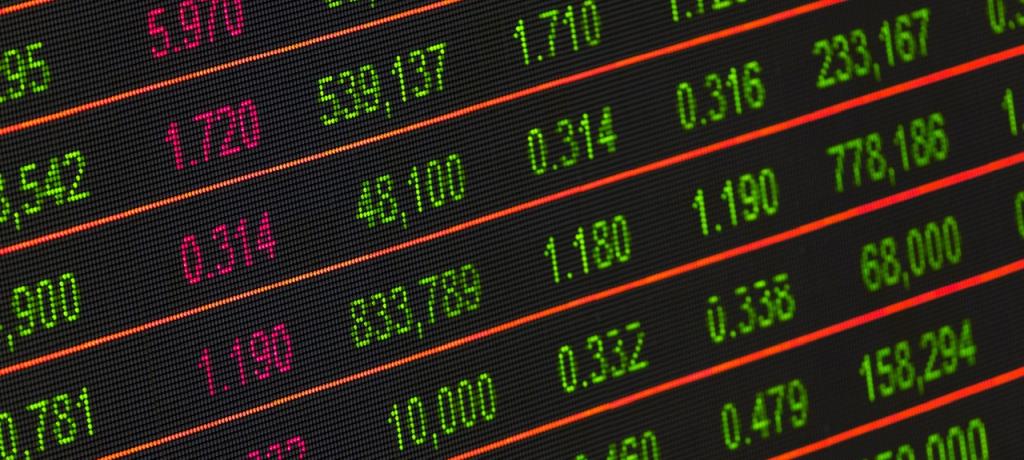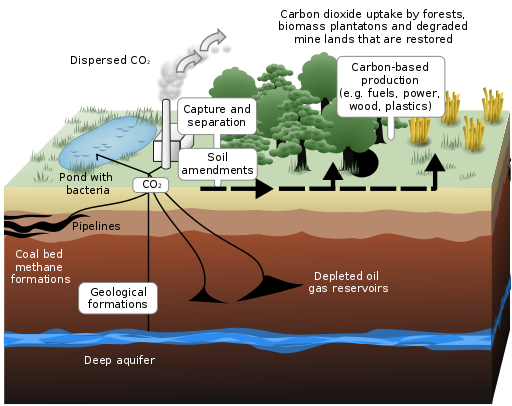
What if capturing or reusing atmospheric carbon dioxide was a profitable business?
Instead of using tax dollars or carbon capture credits, industry would seek out new ways to make money - and jobs - with the added benefit of reducing global CO2 levels.
For people on both sides of the “global warming” debate it seems like a win-win scenario. But is it possible?
CO2 and Biofuels
Over the last decade several industries have attempted to profit from either carbon capture or reuse. A study in the Proceedings of the National Academy of Sciences titled “Near-term deployment of carbon capture and sequestration from biorefineries in the United States” looked at several options in the United States and found that the ones that had the best chance at profitability today were ones that created biofuels. They noted that examples of carbon capture and sequestration (CCS) of biogenic CO2 resulting from fermentation emissions already exist at scale.
For example, algae-based biofuel projects use nutrients, water, sunlight and CO2 to grow algae from which can produce methane or ethanol. To make it profitable, captured CO2 from factories or power plants that burn fuel (and emit CO2) can be fed back into algae biorefineries nearby. The resulting biofuel can then be used to power the factories.
The challenge for these biofuel projects is that they not only need to be able to create fuels at or near the cost of conventional fuel like natural gas, but that they need to be profitable enough to absorb the costs to build them.
One recent example is the a facility run by Carbon Recycling International (CRI) in southwest Iceland. Water, energy and waste carbon dioxide from a nearby geothermal power station are being used to make methanol, which can be blended with petrol to power cars or turned into a range of chemicals. CRI built their demo plant in 2012 and became the world's first company to produce and sell methanol made from waste CO2. Since 2014, the plant can manufacture around 4,000 tons of methanol per year, which is sold in other European countries.
Similar to algae, Kiverdi uses a special kind of microbes called hydrogenotrophs, which are chemoautotrophic and use carbon gases as nutrients. The oils the microbes produce can be used for products like detergents, makeup, paints and as a substitute for palm oil.
Carbon Sequestration
Carbon Sequestration is the capture of CO2 from power plants or industrial facilities that is piped underground for long-term storage. Typically CO2 is either stored in geological formations or is pumped into old underground gas deposits to force up any remaining fuels.

While underground storage may not be profitable, using CO2 to bring new life into old fuel deposits in the United States is. A federal tax credit passed in 2018 called 45Q gives money to companies that capture and store carbon emissions in geologic formations or use CO2 to extract oil from existing wells. The tax credit previously offered $10 per metric ton for enhanced oil recovery, and will increase to $35 a ton in 2024. A $50 a ton tax credit will be available for companies doing carbon capture and storage (CCS) in geologic formations.
However, most of the initial interest has come from the oil industry, who claimed over 59 million metric tons of CO2 were used in aging wells in 2017. With the additional tax credits, the industry is now exploring the possibility of piping CO2 from power plants directly to the oil fields to increase production.
While power plants and industrial facilities firsts come to mind as CO2 generators, another generator of CO2 is the production of Ethanol. Ethanol is a byproduct of fermenting biomass like corn or sugarcane. During fermentation, a huge volume of CO2 is released into the atmosphere. Because of the high quality of the CO2, it could be easily captured, compressed and injected underground for storage or used in aging gas wells.
Reusing CO2
Several projects worldwide make use “recycled” CO2 as inputs into their production. For example, In Switzerland an industrial greenhouse uses atmospheric CO2 extractors to increase tomato yields. Called “direct air capture and storage” this technology does not require CO2 to be captured next to power plants or industrial facilities.

Another example is concrete. The concrete industry is one of two largest producers of carbon dioxide, creating up to 5% of worldwide man-made emissions of this gas, of which 50% is from the chemical process and 40% from burning fuel. The main ingredient of concrete is cement, which is made by superheating limestone. During the process the cement releases massive quantities of CO2. If the CO2 is added back into the cement while making concrete, it is permanently stored as a mineral as the concrete hardens.
Other examples of CO2 reuse include petrochemicals, plastics, carbon fiber and even carbonated beverages (remember the CO2 shortage for beer in the EU?).
One of the most interesting projects is the Global CO2 Initiative at the University of Michigan. Their mission is “To transform CO2 into commercially successful products using a system-level process of technology assessment, technology development and commercialization, accomplished through convening and downstream promotion in partnership with entities around the world.” Their first project was to create the Life Cycle Analysis and Techno-Economic Analysis Toolkit. It is designed to help researchers and industries evaluate products and technologies to determine which ones offer the best combination of profitability and CO2 reduction.
But is it Profitable?
Whether it is biofuel, sequestration or reuse, the challenge for all these technologies is to determine whether they can be used to create profitable businesses. Like wind, solar and batteries, it was a combination of government, research universities and private enterprise that all played a role in turning ideas into technologies that are today commercially viable. If the same energy can be focused on CO2, it can become a win-win for all sides of the climate debate.
Photo by Shopify Partners from Burst
